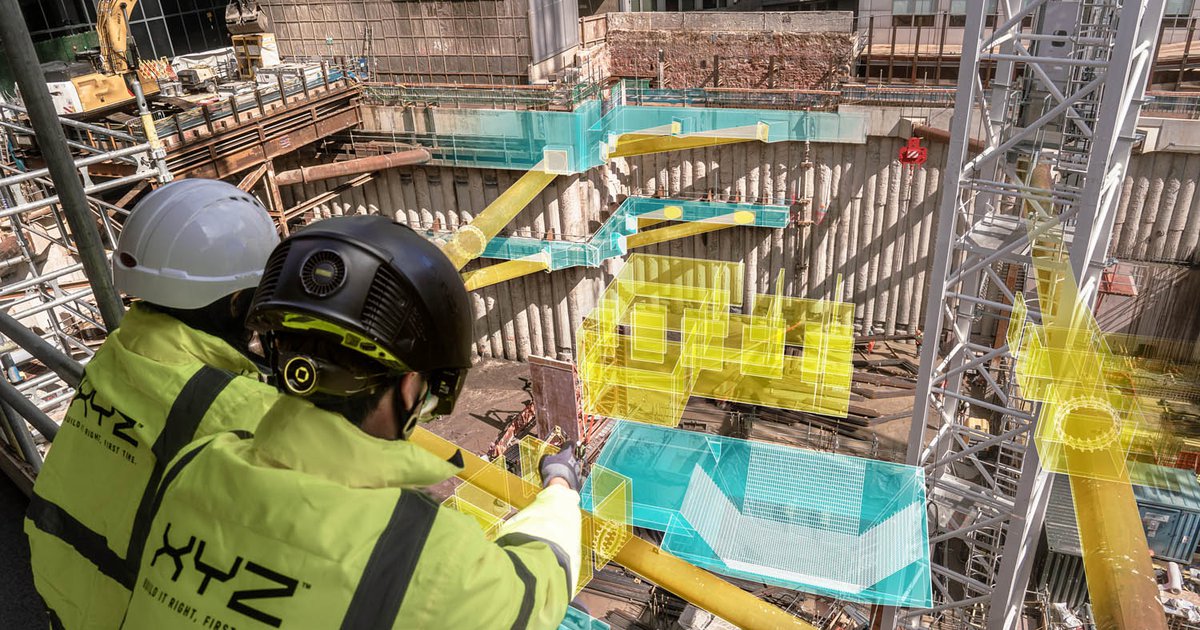
Augmented reality for data center construction – DCD
He also helped build hyperscale data centers in Europe, though he’s not saying who the clients were.
“I started questioning why builders use 2D drawings on-site,” he tells us. Architects and engineers use 3D CAD systems and the designs exist as BIM (building information modeling) data. But on-site, the construction staff have to work from a hard copy, which holds less information and is fiendishly hard to marry up with the real world.
“As an architect, sometimes I struggled to understand my own drawings,” he says.
Working for J. Coffey Construction, he wanted to give the building workers something better. “Back in 2015, we deployed paperless constructions on a building in Ireland,” he says. The project gave the builders more direct access to BIM data. “It was a huge success – everyone was sold on the idea.”
At that stage, he could see the potential, and wanted to take it further. He told his firm: ”This is the future. I’m going for it.” And Coffey agreed, giving him pre-seed funding.
Five years later, XYZ Reality has 70 staff. Backed by $26.5 million in venture funding, its headsets have showed up at projects worth a total of nearly $2 billion.
Data centers are a major part of its market – albeit a secretive one. All Mitchell will say about a major current project is it’s a hyperscale data center in Europe. Elsewhere, however, XYZ’s partner PM Group mentions Denmark, so we can be pretty sure we’re talking about the Meta/Facebook site currently expanding in Odense.
Engineering grade AR
XYZ designed a health and safety compliant helmet, with waveguides to project a hologram in front of the wearer’s eyes.
The company opted for a laser-driven positioning system to improve the accuracy over consumer-grade AR systems which sometimes use cameras for positioning: “You cannot rely on feature points and the camera position.”
The positioning system works with a site coordinate system to give millimeter accuracy, and the images are validated by laser-scanned reality capture.
“There are a number of prosumer devices that are marketed in a way that makes this kind of thing look feasible, but we quickly realized that, for AR to be usable, it needs to be accurate within construction tolerances.”
Prosumer devices like Microsoft’s Hololens can often drift by 100mm, and be affected by factors such as sunlight he says: “We guarantee we can position AR with engineering-grade accuracy.”
Those holograms can show different disciplines including civil, mechanical, architectural, and structural engineering.
“We are 3D creatures. It makes more sense to see things positioned accurately,” he says. “When someone puts on that headset, they get a big smile on their face.”
He sums up: “Ultimately our vision is builders building from holograms.”
Data centers – the perfect use case
Historically construction is seen as conservative, but data centers are more aware of the potential of technology – and they also have a skills shortage that has become acute during a surge in demand for new facilities.
Those facilities are also often very similar, with one providing wanting to build the same building, over and over again And that’s a big opportunity for a new data-driven technology to show its worth.
“Data centers are cookie-cutter projects, so we can measure benefits directly against previous buildings,” says Mitchell. Data center builders that adopt AR can directly see that, where one project required 10 percent rework, the next one needed less than one percent.
Given the large costs of that rework, he says the return on investment can work out well, with one system paying for itself nine times over in six months: “The drop off in rework happens instantly.”
This content was originally published here.


